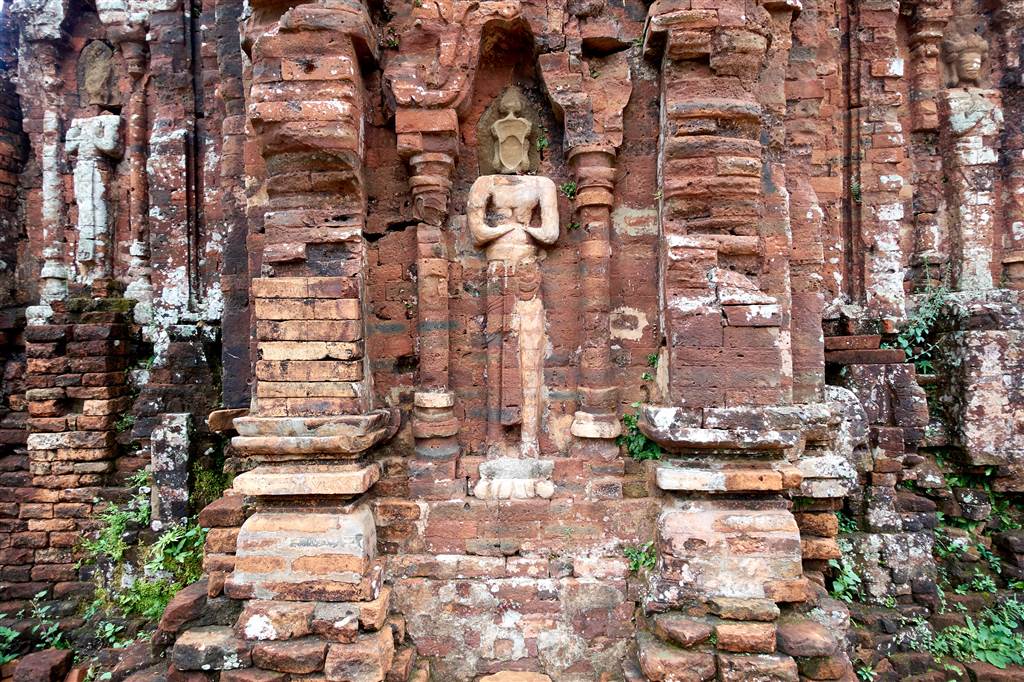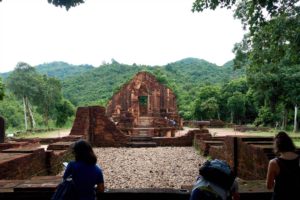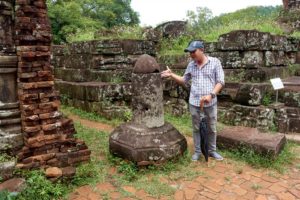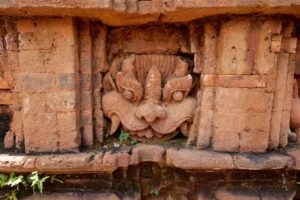Beyond Pho – God Shiva at My Son

We rose early to visit the Duy Phu village at My Son Valley. My Son, in Vietnamese, means “beautiful mountain.”
In this part of Vietnam, the celebrated ancient culture is that of the Champa people. Now considered an ethnic minority (one of the 55), the population of the Champa people stands at about 120,000 now.
The My Son ruins (pronounced Mee Son) is east of Hoi An by 55 km. It stands witness as the abandoned relic of the Champa people’s days of glory, long by-gone. In its heyday, the My Son sanctuary had towers and temples standing, some 70 structures altogether. That was, until the American War destroyed most of these beautiful structures. The VietCong took advantage of this environment and used it for guerrilla warfare. The traces of the crater bombs still remain on the site now. There are only about 20 good structures still standing today.

The Cham people had an origin tracing back to Indonesia. In their ancient existence, the Cham king built these temples and towers for worship, mainly celebrating the Hindu god Shiva. The construction of the My Son Sanctuary began in 4th century to 13th century for 900 years. It then ceased due to the defeats in wars with Vietnam. The Cham people began their migration to the Mekong Delta in 13th and 14th century. The site was then relegated to a glory forgotten.
As the Cham people migrated southward, they continued to build these religious sites, thus similar ruins stand where they settled. Once settled down, however, they converted to Islam. Today they are identified by the white gown that they wear.
Shiva wears a snake. She personifies in a constant pregnancy. Despite the protruding belly, however, she is both man and woman. The worship of Shiva is often motivated by the wish for fertility. On the stone lingas that are very common on the windows of the tower and throughout the site, the symbolism is that of a male’s genital in three parts.

The temples are places of worship and they house the gods. There are no windows in the temples. The structures with windows are the towers, mostly reserved for storage. This group of ruins served exclusive religious purposes; there was no residency here. With a group of tower structures, the windows are aligned, letting a light beam that is synched to welcome the god’s presence across the towers.
It remains a mystery today how the ancient Cham people made and fired their bricks. They built these edifices with bricks without mortar. Our very knowledgeable tour guide showed us the difference between the original bricks and the modern bricks that were part of the restoration effort. The original structures retain its red color throughout the years, with no sign of change and decay. The newer, modern bricks turned black. The wind and the rain consistently eroded them, and the erosion showed.
As a UNESCO site, the My Son ruins received quite a bit of attention during the 1990s for restoration. However, the structures restored with newer bricks did not hold up so well over the years. Restoration has thus stopped. The modern men simply could not replicate the art of the ancient Cham people. The restoration has cost quite a bit of money from the United Nations, Vietnam Government and the United States. Word had it that it also failed due to corruption.



